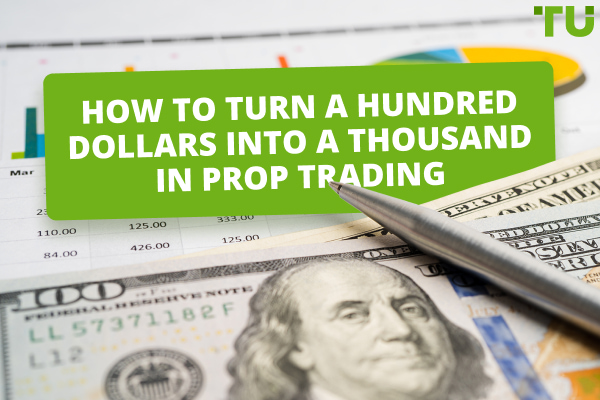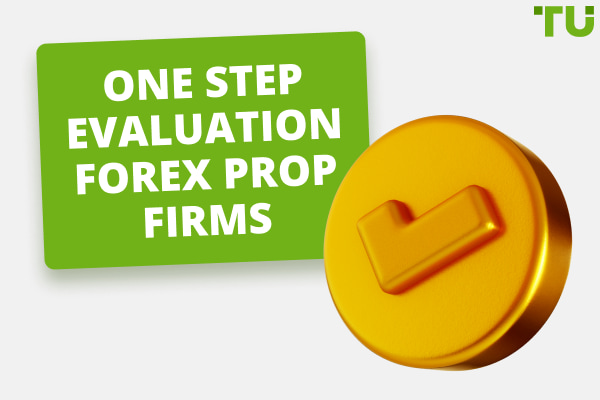What strategies do prop traders use?
Prop trading strategies for beginners should include the following:
-
1
A well-defined strategy
-
2
Use of risk management methods
-
3
Education
-
4
Sufficient capital to cover the risks associated with trading
Prop trading is the practice of trading with capital that is provided by a proprietary trading firm. This type of trading offers traders the opportunity to access capital that they may not have been able to access otherwise.
Prop trading firms may understandably be reluctant to lend money to newbies. But this article can help you develop a strategy to follow the rules for working with a proprietary trading firm.
Fund your account with Topstep!Basics of prop trading
Prop trading is an investment strategy that involves a trader or a firm trading with its own capital for profit. Prop traders use their own capital to buy and sell securities while making their own decisions about what to buy and when to sell, without relying on anyone else.
Prop traders can benefit from a variety of strategies to maximize profits, such as analyzing market trends, taking advantage of arbitrage opportunities, and utilizing technical analysis. The primary goal of prop trading is to generate profits from the market movements.
There are some advantages to prop trading over traditional trading, such as reduced transaction costs, more control over trading decisions, and the potential for higher returns. However, it also carries significant risks, including the risk of losing your own capital. In addition, prop trading is more challenging than traditional trading, as it requires significant research and analysis of markets and trading strategies.
Prop trading strategies for beginners should focus on risk management, as it is essential to protect your capital and avoid large losses. Beginners should also focus on developing a good understanding of the markets, and developing trading strategies that are tailored to their own goals and risk tolerance.
Automated trading tools can also be a good option for beginners, in order to reduce the amount of time they spend analyzing the markets and making trading decisions.
Ultimately, prop trading can be a profitable venture, but it requires significant knowledge and experience to be successful.
How to trade with a proprietary trading firm
Proprietary trading firms often set risk and profit targets which must be respected in order to successfully trade. These targets are used to ensure that trading remains within the firm's risk tolerance and to maximize profits while minimizing losses. If these targets are violated, the firm may close out the position, suspend the trader, or impose disciplinary action.
It is important for traders to understand the firm's expectations and to adhere to the risk and profit targets set by the firm. Traders should also be aware of the consequences of violating these targets, as this could lead to suspension or termination of trading privileges.
| Risk Target | Profit Target | Consequences |
|---|---|---|
Trading within risk tolerance |
Maximize profits |
Close out positions |
Adhere to firm's expectations |
Minimize losses |
Suspend traders |
Understand consequences |
- |
Impose disciplinary action |
Traders should also be familiar with the firm's trading tools and strategies, such as the types of orders and charts available. It is a good idea to practice and become comfortable with these tools and strategies prior to trading. This will help traders become more successful in their trading.
In addition to understanding the firm's expectations and trading tools, traders should also be aware of the market and understand its trends and movements. This will help traders identify potential opportunities as well as be aware of the risks involved in trading and have a plan in place to manage them.
To be successful in trading with a proprietary trading firm, traders must adhere to the firm's risk and profit targets, have an understanding of the firm's expectations and trading tools, and have a good understanding of the market. Following these guidelines significantly increases the likelihood of traders becoming successful in their trading.
How to choose a strategy for prop trading
When engaging in proprietary trading, selecting a strategy that is best suited to the trader's risk tolerance and market conditions is paramount. One way to reduce risk is by using short stop losses, as well as confirming signals from different timeframes.
Additionally, trading from really important levels and refraining from trading during news releases can also help to minimize risk. Other risk management techniques include avoiding lagging indicators and trading only when the market conditions are favorable.
It is also important to consider the timeframe you are trading in, as well as the type of asset you are trading. This will help to ensure that the strategy you choose will be effective.
In essence, the most important thing is to select a strategy that is suitable for your risk tolerance and trading goals, and execute it well. By taking the time to properly research and evaluate different strategies, you can ensure that you are selecting the most optimal approach.
What you need to do before you start trading with a prop firm
Before engaging in proprietary trading, thoroughly researching and understanding the various strategies available is a good practice. This will help traders to determine which strategies are the most suitable for their trading objectives.
It is also important to test the strategies in both automatic and manual modes. Automatic mode tests the strategy on past market data, while manual mode tests the strategy on a demo account. Volume analysis can be used to identify high-probability trading opportunities.
Testing a strategy in this way will provide evidence that the strategy is viable and will help to secure capital from a proprietary trading firm. It is essential to ensure that the strategy is suitable for the trading objectives and risk profile, as well as to gain an understanding of the technical aspects of trading.
Finally, traders should ensure that they have a reliable source of market data and a fast internet connection.
Best Prop trading firms
Conclusion
The research, understanding, and testing of strategies are essential steps to maximize the chances of success when engaging in proprietary trading. Prop trading strategies for beginners should include the following:
-
1
A well-defined strategy. A strategy should be tested and refined before trading with real capital
-
2
Risk management. Risk management techniques should be employed to limit losses in case of unexpected market conditions
-
3
Education. A trader should have a good understanding of the markets and the strategies that use
-
4
Capital. A sufficient capital should be available to cover the risks associated with trading
Developing a successful strategy and gaining capital is only the first step of the path to success. Even with these two elements in place, traders should remain vigilant and follow the rules and strategies they have developed. It’s important to remember that not losing money is just as important as earning profits.
Patience and discipline are essential, as the markets can change unexpectedly. To ensure the best chance of success, traders should always pay attention to the markets and the strategies they use.
FAQs
How much do proprietary traders make?
Proprietary traders' earnings can vary widely based on their skill, experience, the firm they work for, and market conditions. While beginners might earn a base salary plus a percentage of the profits they generate, seasoned traders at top firms can make several hundred thousand to millions annually, especially if they consistently perform well.
Is prop trading safe?
Prop trading involves significant risks, as traders are often using the firm's capital to place trades. While there's potential for high rewards, there's also potential for substantial losses. The safety also depends on the firm's risk management practices, trading strategies, and the individual trader's decisions.
How can I be a good proprietary trader?
To be a successful proprietary trader, focus on continuous education to understand market dynamics, develop a disciplined trading strategy, manage risks effectively, and maintain emotional composure during market volatility. Regularly reviewing and learning from both successful and unsuccessful trades can also be invaluable.
Is prop trading illegal?
Prop trading is absolutely legal in most countries, as there are no rules or laws specifically prohibiting it. However, it’s always a good idea to check your country’s specific laws to make sure you are not engaging in illegal activity.
Glossary for novice traders
-
1
Broker
A broker is a legal entity or individual that performs as an intermediary when making trades in the financial markets. Private investors cannot trade without a broker, since only brokers can execute trades on the exchanges.
-
2
Trading
Trading involves the act of buying and selling financial assets like stocks, currencies, or commodities with the intention of profiting from market price fluctuations. Traders employ various strategies, analysis techniques, and risk management practices to make informed decisions and optimize their chances of success in the financial markets.
-
3
Prop trading
Proprietary trading (prop trading) is a financial trading strategy where a financial firm or institution uses its own capital to trade in various financial markets, such as stocks, bonds, commodities, or derivatives, with the aim of generating profits for the company itself. Prop traders typically do not trade on behalf of clients but instead trade with the firm's money, taking on the associated risks and rewards.
-
4
Risk Management
Risk management is a risk management model that involves controlling potential losses while maximizing profits. The main risk management tools are stop loss, take profit, calculation of position volume taking into account leverage and pip value.
-
5
Leverage
Forex leverage is a tool enabling traders to control larger positions with a relatively small amount of capital, amplifying potential profits and losses based on the chosen leverage ratio.
Team that worked on the article
Vuk stands at the forefront of financial journalism, blending over six years of crypto investing experience with profound insights gained from navigating two bull/bear cycles. A dedicated content writer, Vuk has contributed to a myriad of publications and projects. His journey from an English language graduate to a sought-after voice in finance reflects his passion for demystifying complex financial concepts, making him a helpful guide for both newcomers and seasoned investors.
Dr. BJ Johnson is a PhD in English Language and an editor with over 15 years of experience. He earned his degree in English Language in the U.S and the UK. In 2020, Dr. Johnson joined the Traders Union team. Since then, he has created over 100 exclusive articles and edited over 300 articles of other authors.
Mirjan Hipolito is a journalist and news editor at Traders Union. She is an expert crypto writer with five years of experience in the financial markets. Her specialties are daily market news, price predictions, and Initial Coin Offerings (ICO).
















